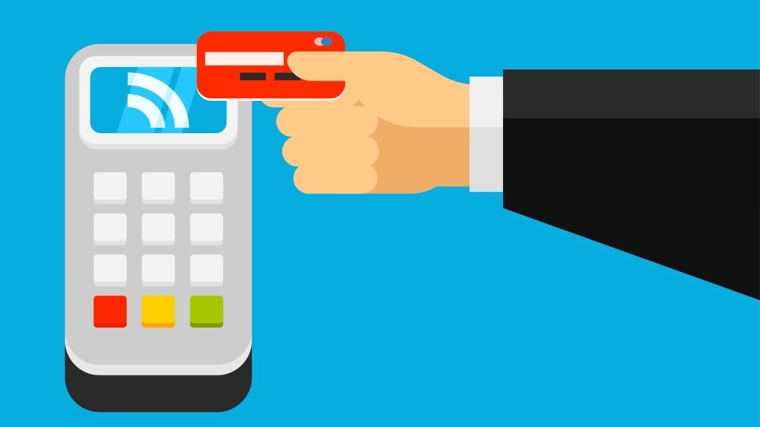
The spirit is willing but the economy is weak.
Further signs of the patchiness of our hoped-for economic recovery were displayed on Tuesday with Statistics NZ's electronic cards transactions data for September showing a seasonally-adjusted 0.5% fall in retail industries card spending.
This follows three consecutive rises and when considered alongside the most recent services industry and manufacturing sector performance index figures, and flat housing figures, suggests that September was another wobbly old month for our economy.
The Reserve Bank will likely be feeling vindicated that it opted for a jumbo sized 50 point cut to the Official Cash Rate last week (to 2.5%) in attempt to breathe life into a clearly faltering recovery.
Retailers particularly have been doing it tough. And while recent months have suggested times are (slowly) getting better, the September figures show that there's a way to go yet.
Westpac senior economist Satish Ranchhod, who had expected a 0.3% rise in spending in September, noted that "a year after the start of the RBNZ’s easing cycle, momentum in the retail sector is still muted".
In terms of the detailed sectoral retail spending figures in September, Stats NZ said the movements (all seasonally adjusted) were:
- consumables, down $15 million (0.5%)
- durables, down $14 million (0.8%)
- motor vehicles (excluding fuel), down $5.2 million (2.6%)
- apparel, down $4.8 million (1.4%)
- fuel, down $2.5 million (0.5%)
- hospitality, up $22 million (1.5%).
Core retail spending, which excludes fuel and vehicles, dropped 0.4%.
ASB senior economist Jane Turner noted that durables spending "was particularly weak", with the 0.8% fall in September more than unwinding the previous month’s 0.5% gain – durables spending was down 0.5% over the September quarter.
"We look to durables spending as a proxy for domestic demand (as overseas visitors are unlikely to be buying household items while here). Durables spending often moves with the housing construction cycle and house sales, and the fall in spending over Q3 mirrors the recent decline in housing turnover," she said.
"This suggests the recovery in household spending that was underway over the past year may have started to run out of steam. NZ households continue to face many headwinds, with weak labour earnings and the rising cost of living a drag on discretionary spending. The sharp slowdown in population growth also presents a challenge to the retail sector."
Stats NZ said the non-retail (excluding services) category remained unchanged from August 2025. This category includes medical and other health care, travel and tour arrangement, postal and courier delivery, and other non-retail industries.
The services category was down $4.0 million (1.0%). This category includes repair and maintenance, and personal care, funeral, and other personal services.
The total value of electronic card spending, including the two non-retail categories (services and other non-retail), decreased from August 2025, down $34 million (0.4%).
In actual terms, cardholders made 168 million transactions across all industries in September 2025, with an average value of $54 per transaction. Both the number of transactions and the amount spent per transaction were unchanged from a year ago. The total amount spent using electronic cards in September 2025 was $9.1 billion.
Given the rise in figures seen in recent months prior to the September month, the figures for the September quarter as a whole look somewhat more encouraging.
Stats NZ said the total value of electronic card spending, including the two non-retail categories (services and other non-retail) increased by $209 million (0.7%) compared with the June 2025 quarter on a seasonally adjusted basis.
Westpac's Ranchhod said in reference to the fact that the September month fall in sales followed followed three months of gains that the longer-term trend painted a picture of "subdued growth rather than decline", with spending levels up 1% over the past year.
"That sort of modest growth is still disappointing in the context of continued population growth and increases in prices, and points to continued softness in per-capita spending levels, especially adjusted for price changes," he said.
"The result is more surprising as increasing numbers of borrowers have been rolling on to lower mortgage rates over the past few months. But even with that additional money in their pockets, households aren’t rushing to the checkout yet."
It was not all bad news though.
"Hospitality spending has been climbing at a brisk pace over the past few months, and this may be an early sign that spending appetites are starting to firm.
"Looking ahead to the Christmas shopping season, we’ll be watching to see if the current softness in spending gives way to stronger demand. With large numbers of borrowers now rolling onto lower interest rates, increases in households’ disposable incomes will help to boost spending over the holiday period. However, any lift may prove to be modest if factors like the soft labour market or ongoing cost of living crisis prompt households to keep their cards in their pockets."
ASB's Turner said "strong headwinds" have slowed the recovery in household demand over 2025.
"...Fortunately, the 2025 winter of discontent has prompted the Reserve Bank of New Zealand (RBNZ) to accelerate its pace of rate cuts, with its 50 basis point cut in October. We expect another 25 basis point cut in November, and risks are skewed to another cut early next year if data continue to show a muted pace of economic recovery.
"As households start to refix mortgage rates over the coming months, we should see a boost to discretionary spending. However, a turnaround in the labour market is also key to see a more sustainable momentum in retail spending over 2026," Turner said.
12 Comments
The way to riches is to spend less than you earn. So yes initially less retail.
But "nek minute". Bingo. You can spend lots. And still spend less than you earn.
There might be a few steps missing in your logic.
Your earnings are someone elses spending. If both consumers and the government are spending less in the first phase, where do your increased earnings come from to spend more in the second phase?
That’s probably the worst way to riches. Elon Musk didn’t get there by squirrelling his money away.
Musk is known for radically cutting unnecessary expenses and embracing minimalism - living in a small, inexpensive house, forgoing luxury possessions, and refusing to spend on unnecessary items, even when he could easily afford them. However, he has repeatedly said that accumulating wealth for the sake of saving or personal security is not his motivation; instead, he tends to pour his resources into high-risk ventures and innovation rather than building up savings for their own sake.
Yeah I guess he kind of fluked it through PayPal. But it would be almost impossible to do it simply by saving don’t you think? I could save 100% of my income forever and never have enough money to start a company that builds electric cars.
"I could save 100% of my income forever and never have enough money to start a company that builds electric cars."
Think about that admission...and then ask yourself the role of 'money'
"We havn't got the money so we will have to think"
Ernest Rutherford
The government is not the same as a household or business. It does not have shareholders or investors and its services are delivered - often free - as private sector assets. Government debt is a liability on the government side of the ledger - it is literally an asset in the private sector - it is not a liability.
It also has it's own bank - it doesn't 'borrow' money from anyone in the same way an individual or entity in the private sector does.
If you cut back on government spending and investment you are making the private sector poorer by definition. Do you have lower or higher costs to you and your family if you use the public health service of private insurance? Is your electricity bill higher or lower because shareholders in the electricity sector have taken more than $12 billion dollars in dividend payments? Will it cost you more or less if the roading network becomes privatized and user pays by km - as is being proposed?
seems to be a case of a mixture of good news and bad news with consumers changing their mood accordingly. The negative GDP would have got people shutting their wallets away, now the 0.5% OCR drop may get them back out again. We’ve had that seesawing for a while now.
The 0.5% OCR cut and signaling more to come is a sign of panic at the RBNZ. But they are being asked to do too much on their own. Low interest rates with inflation at 3% feels a bit risky and desperate to me.
Nothing gives consumers more confidence than the sight of their central bank panicking
I've said it before and I'll say it again. Government spending is the missing piece in the NZ demand puzzle. Why doesn't everyone just acknowledge it so that we can move forward as country and focus on sustaining full employment and GDP above zero - like the previous Finance Minister did.
Stop the hysteria around the amount of reserves created and get on with stuff - instead of sitting around like there is nothing anyone can do. "If we can do it - we can afford it" - JM Keynes. The RBNZ is signaling, as strongly as it can, for the government to use the spare capacity in the economy. Spare capacity that is growing each quarter.
"If we can do it - we can afford it" - JM Keynes.
That is true if we dont need resources from without.
And as an aside who owns the resources of these isles?
We need to decide what we are willing to trade those resources for or even if we are willing to trade them at all.
As long as we (the citizens of NZ) agree and can defend them nobody can outbid the issuer of the NZD...not even the US or China.

We welcome your comments below. If you are not already registered, please register to comment.
Remember we welcome robust, respectful and insightful debate. We don't welcome abusive or defamatory comments and will de-register those repeatedly making such comments. Our current comment policy is here.